Sustainability: On Local Food and Community
- Summer Garden
- New Broccoli Floret
- Winter Broccoli Harvest
- My Neighbors' Garden
- Heathcote Botanical Gardens Community Garden
- Gibbons Organic Farm
- The Downtown Fort Pierce Green Market photo by Brian Gilligan
- Our Booth @ The Downtown Fort Pierce Farmers' Market
One Saturday morning I was tending my booth at The Downtown Ft. Pierce Green Market, and while I was listening to a woman talk about local food it occurred to me that although we all throw the term local food around a whole lot we don’t spend much time exploring what local actually means and how it impacts our families, our communities, our economy and our ecology.
I think the defining idea for local food is that we should be getting our food from as close to home as we can. Where is the closest locally grown food? Start making circles. The food grown closest to my home is right outside my front door and right outside my back door. We should all start there if we can. The next closest? My next door neighbor. One of your neighbors is probably hiding a lovely vegetable garden in the back yard too.
The next closest food is at the grocery store, right? No, not really. Although shopping there helps to support working people who live in our communities, the meat, dairy and produce in our grocery store come from very far away, and have to be shipped there. Grocery produce, conventional or organic, is never very fresh, and the carbon cost is high. Support your grocery community by buying your staples or paper goods there. Look for fresh food closer, at least until they begin to sell locally grown food in the grocery stores.
The next closest food comes to the Green Market in Downtown Fort Pierce on Saturday mornings. There is a local certified organic farm that sells fresh vegetables at that market. There is also a local hydroponic farmer, and a local conventional farmer, a local pastured poultry rancher, and a natural farmer from Okeechobee. There are several vegetable importers who set up there too, but it is pretty easy to tell the local growers from the importers by the vegetables they have.
Local farms are also a shopping resource in some communities. I know my local poultry producer Crazy Hart Ranch welcomes shopping visits from her customers that can’t or don’t make it to the markets on Saturday. Gibbons Organic Farm also sells from the farm for a few customers each week, and I hear that White Rabbit Farm has a pretty large drop in clientele.
One lady I see shopping at the Green Market belongs to an organic vegetable coop group. The people in her group order from an organic vegetable importer. The community order is trucked in to the home of one group member and from there is distributed to the rest. This is organic but can not be considered local food; it is coming into a distribution center from all over the world. The food is not local, not fresh, does nothing to support the local economy, and the carbon foot print is huge.
Eating locally is not always easy. Although it is not always expensive it can be more expensive than imported food. Partly because we have come to expect to be able to find food at a price that is actually less than what it costs to produce and ship. This is mostly thanks to subsidies the government awards to farms, and most of these subsidies are going to the industrial factory farms that produce the lions share of the food available in the grocery stores rather than to family farms which are only lately inching back from a steep and dangerous decline. Family farms which have been disappearing are re-surging by learning to fill niche markets, and by switching to sustainable farming techniques instead of industrial farming techniques. In a very real way I think our lives depend on the salvation of the family farm, and on the creation of new homestead and urban farming. I think the future of the family farm rests with the will of the consumer. If we support our local family farms by doing our shopping with them we sustain them and we stimulate our local economy in a way that buying shipped in food does not.
The farmer/consumer relationship is desirable. The farmer who knows the people who consume his product is more likely to be in touch with what matters to them, and is more able to provide a satisfying product. A consumer who can have a conversation with the farmer who grows his food is a more informed consumer and tends to have more trust and confidence in that farmer. Confined Animal Feeding Operations, and Factory Farms will never seek out a relationship with the consumers they provide. Too many of the day to day occurrences in those operations are appalling and so a culture of closed secrecy is necessary in such places, also there is no farmer in a factory farm, and no rancher in a confined animal feeding operation. Really.
Now before you get mad at the government over the farm subsidy issue it can be said that the government was probably trying to find a way to make food affordable for every citizen, while assisting family farmers in making ends meet, only as more and more family farms failed trying to compete with the factory farms their subsidies were gobbled up by the factory farms making factory farms even more capable of competing family farms right out of the market. Also most of the subsidies the government awards now go to grain producers, so a farmer who grows vegetables, nuts, fruits or livestock is not eligible for subsidies. Food in the grocery store and at fast food restaurants has been pretty inexpensive, but the cost of that affordable but low quality food is showing itself in the form of record numbers of morbidly obese citizens, and is impacting our ecology in ways we can not afford, and lastly in keeping food cheaper than it costs to produce those subsidies have been the killing blow for many multi generational family farms.
In addition to providing local farm, family, and business stimulation, buying locally produced food reduces the carbon footprint of our food. If your food travels 50 miles to the market, and you travel 10 miles to get there and back that is a significant fuel and carbon reduction from the thousands of miles food travels to get to your grocery store shelf. Lots of food is cheaply grown in other nations especially for our grocery stores while the native people in those nations starve. Using resources from other countries to serve our own needs depletes and unbalances the natural resources upon which others rely.
At our house food is considered the most important expense in our budget, and although times are tough it is the one expense we don’t spare. Not only do we find fresh local farm grown food to be far superior in flavor to the ‘fresh’ food we find at the grocery store, we consider this a health issue, and that where we could save on lower cost food we would lose out on health care costs, we also consider that this is a moral imperative; we think that supporting locally grown food systems will lead to solving some of the world’s most pressing problems, and so we make ourselves heard at the cash register.
Now the responsibility lies with us to recognize local food wherever it may be in our communities. Support your local ranchers and farmers lest they disappear forever. Grow food at home, and encourage your neighbors to do the same. The two best ways to encourage your neighbors to grow food is to put your gorgeous vegetable garden in the front yard, and share the harvest. Most people don’t know what fresh food grows like or tastes like anymore. Some never had it before, and the rest forgot.
Eating locally has a benefit that some would call a drawback. Eating locally means eating what is in season in your region.
If you are buying grapes in January they are probably from Chile. Do you know how many miles away Chile is? If you want grapes off season learn to put food by while it is in season. Make preserves, or just freeze a bag or jar of grapes. Frozen grapes are my niece’s favorite summertime snack. When your favorite navel orange or tangelo is at the height of its season peel and freeze some for the summer. Makes sauces or salsas of your tomatoes to freeze, or dehydrate them. Dehydrate pineapples and mangos in the summer for a winter fruit treat. Here in S. Florida there is never a time when there isn’t something delicious growing. Learning to eat in season brings great appreciation for the changes in crops that the seasons bring. By the time my lettuce comes up bitter I am sick of lettuce anyway and am craving okra, bitter melon, mangos, summer beans and peas, and pineapple, and when the cold comes I am ready once again for mustard greens, broccoli, radishes, carrots, and yes, lettuce.
There is one more benefit in finding, buying, growing and sharing local food. It will help you to discover your community.
Spend less time in your car and more time walking/shopping in the market and you too will listen in on and participate in the conversations that connect us with other people. Get to know your local rancher and farmer at the market, find out what the next week’s harvest will bring. Develop a relationship with a small neighborhood grower like me. I am your neighbor, and I am growing amazing fresh food. Why not learn how you can too? Put a vegetable garden and some fruit trees in your front yard, and you will begin to meet your neighbors. Destroy your turf grass and see how interesting the conversation gets!
Join Your Community, Eat Locally Grown Food, Preserve Family Farms.
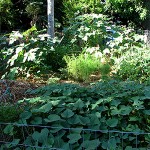
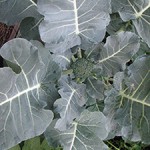
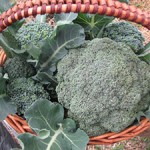
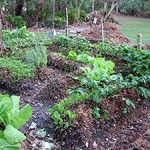
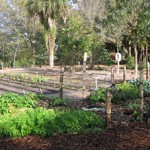
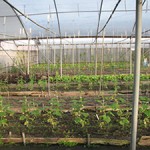
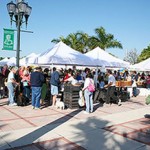
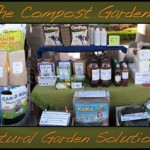

7 Responses
Hi Adina,
Brava! Well said. I have used the radius idea for what local means to me for a while now. I am much more limited in availability than you but have no good excuse not be growing more of my own food. I have slacked off it that department but you always inspire. Blueberries look good so far but this cold needs to start backing off.
Christine
Really interesting blog, Adina. And , as always, gorgeous photos!
What a beautiful and useful post. Your way of thinking is so viable, you left nothing to be added, you covered everything. I just want you to know I support your vibe.
Thanks for your comments Christine, Sara, and Daniel.
Christine, I know you are in Central Florida, in what month do y’all start your spring gardens? My blueberry plants have a decidedly red tint to them, but I would imagine that they are getting mad chill hours, and I hope that is good for them. I have Windsor and Emerald. Do you know of them?
Ha, ha! I feel like I need to ask you when to start my spring garden. I can never get it straight when exactly to start seeds for veg. I think everything is off to a slow start with all the cold. My blueberries are in varying states of semi-dormancy, budding, blooms and even had berries (they were fried by the cold). They did defoliate for the most part so will have a spring flush of new leaves. Hopefully, will get thru March without a freeze! I have some Windsor and Emerald plants but haven’t had them as long as Gulfcoast. I believe it is Windsor that produced quarter-sized (and bigger) berries in the past! I have been happiest with Gulfcoast so far as consistent productivity goes.
Keep your fingers crossed for a bumper crop of b berries this season : )
Christine, I write for South Florida because that is where we live. My spring garden has been going non stop since… well, Sept. I guess. I have no idea when you all stop and start up there in Central Florida.
I am crossing my fingers for your fabulous blueberries.
Oh my goodness! Amazing article dude! Thank you so much,
However I am having problems with your RSS. I don’t understand why I cannot join it. Is there anybody else having the same RSS issues? Anyone who knows the solution will you kindly respond? Thanx!!